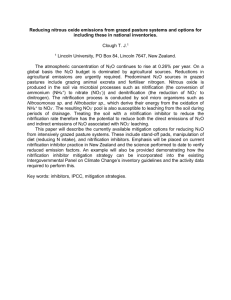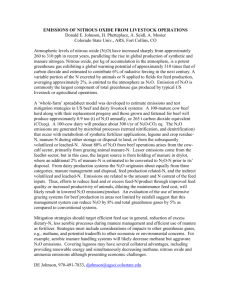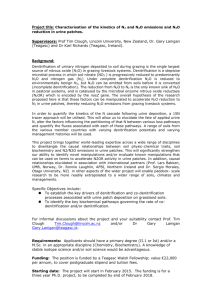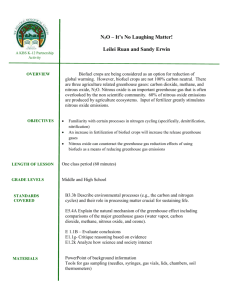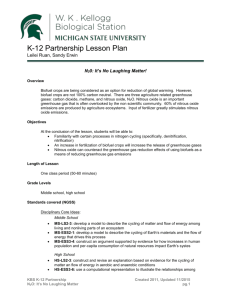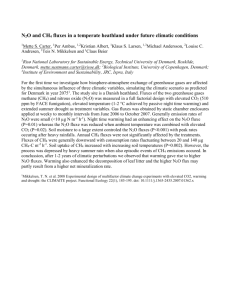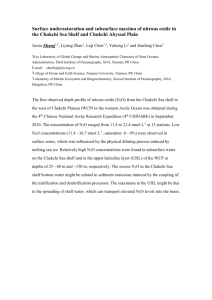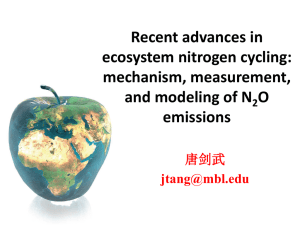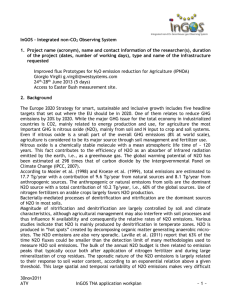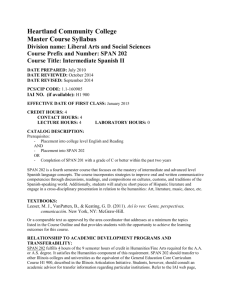Roper
advertisement
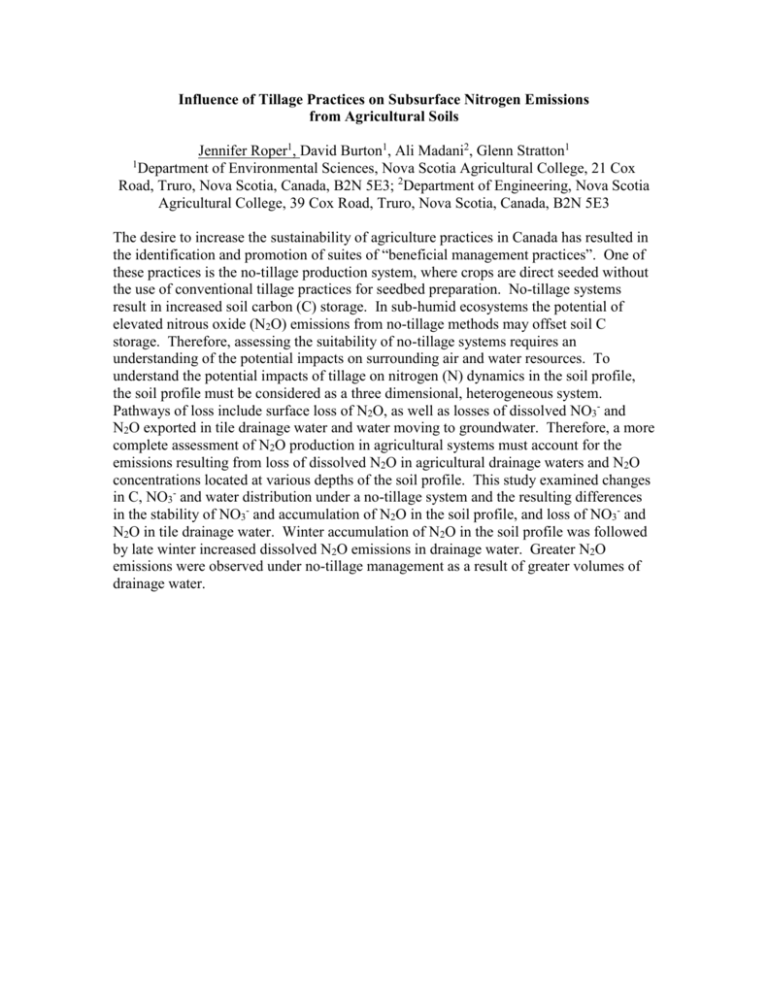
Influence of Tillage Practices on Subsurface Nitrogen Emissions from Agricultural Soils Jennifer Roper1, David Burton1, Ali Madani2, Glenn Stratton1 1 Department of Environmental Sciences, Nova Scotia Agricultural College, 21 Cox Road, Truro, Nova Scotia, Canada, B2N 5E3; 2Department of Engineering, Nova Scotia Agricultural College, 39 Cox Road, Truro, Nova Scotia, Canada, B2N 5E3 The desire to increase the sustainability of agriculture practices in Canada has resulted in the identification and promotion of suites of “beneficial management practices”. One of these practices is the no-tillage production system, where crops are direct seeded without the use of conventional tillage practices for seedbed preparation. No-tillage systems result in increased soil carbon (C) storage. In sub-humid ecosystems the potential of elevated nitrous oxide (N2O) emissions from no-tillage methods may offset soil C storage. Therefore, assessing the suitability of no-tillage systems requires an understanding of the potential impacts on surrounding air and water resources. To understand the potential impacts of tillage on nitrogen (N) dynamics in the soil profile, the soil profile must be considered as a three dimensional, heterogeneous system. Pathways of loss include surface loss of N2O, as well as losses of dissolved NO3- and N2O exported in tile drainage water and water moving to groundwater. Therefore, a more complete assessment of N2O production in agricultural systems must account for the emissions resulting from loss of dissolved N2O in agricultural drainage waters and N2O concentrations located at various depths of the soil profile. This study examined changes in C, NO3- and water distribution under a no-tillage system and the resulting differences in the stability of NO3- and accumulation of N2O in the soil profile, and loss of NO3- and N2O in tile drainage water. Winter accumulation of N2O in the soil profile was followed by late winter increased dissolved N2O emissions in drainage water. Greater N2O emissions were observed under no-tillage management as a result of greater volumes of drainage water.
